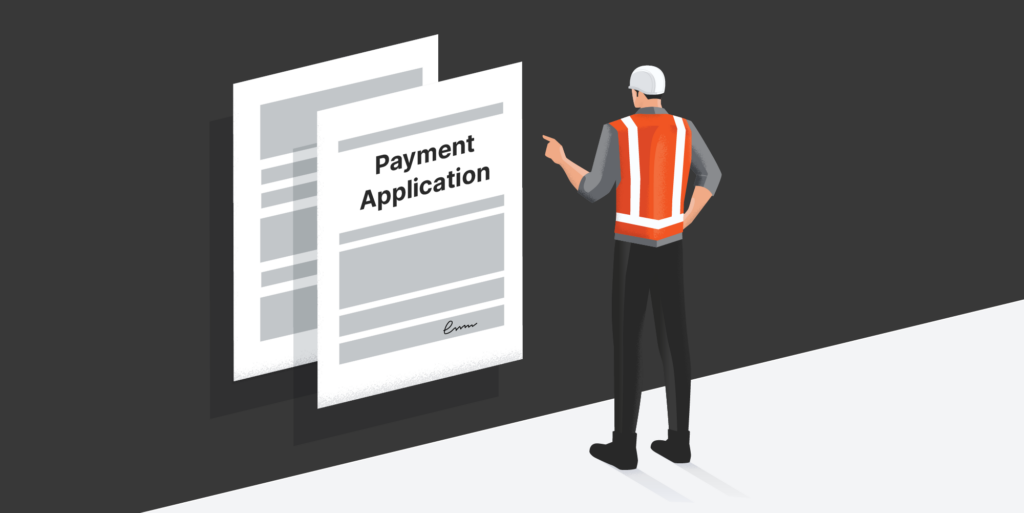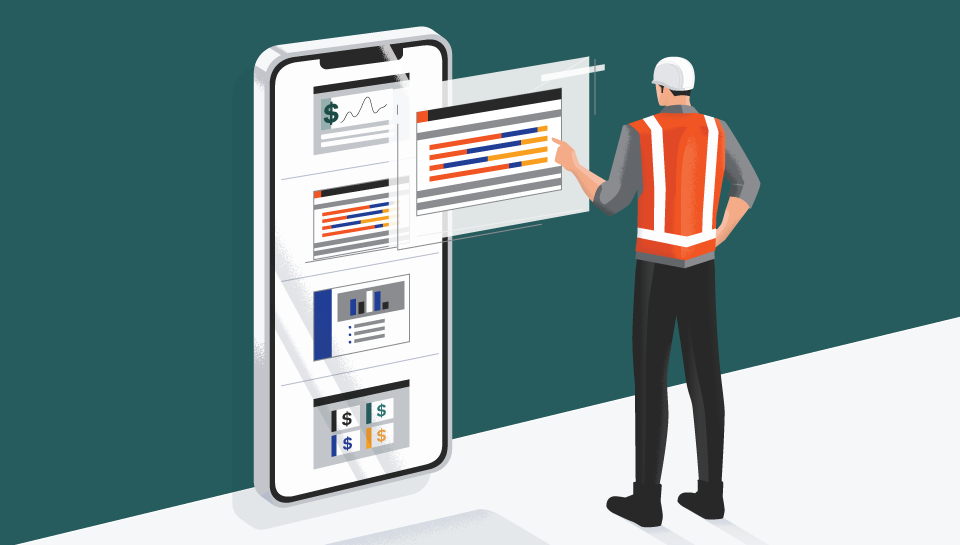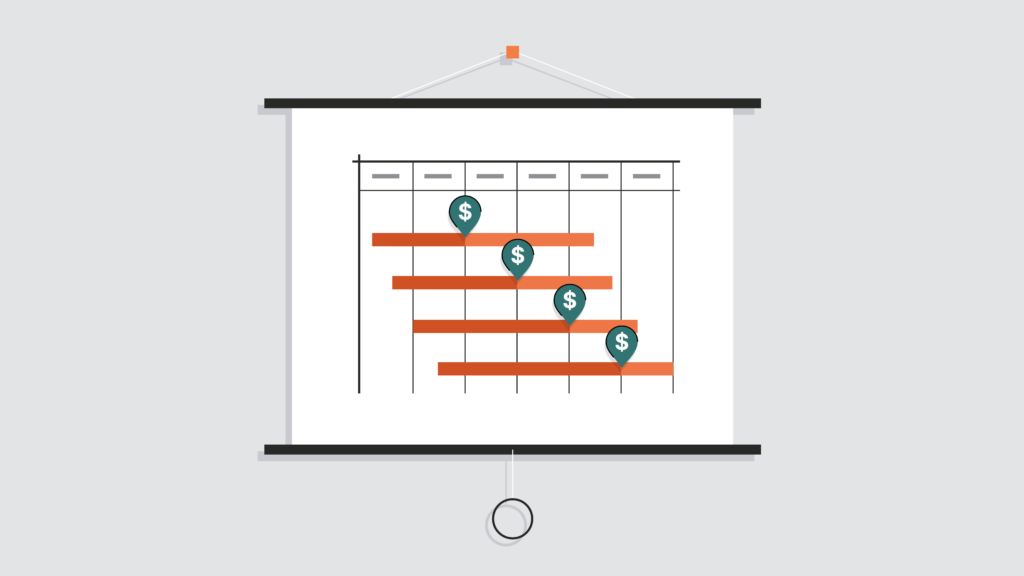— 6 min read
Pencil Requisition: Previewing the Construction Payment Application


Last Updated May 2, 2024

Alexis Lambert
Strategic Product Consultant
Alexis "Lexi" Lambert is a seasoned construction industry professional whose expertise has been honed through pivotal roles such as project accountant and process improvement manager, and she is now serving as a strategy product consultant at Procore. She holds a Bachelor of Science degree in Accounting from the prestigious W. A. Franke College of Business at Northern Arizona University.

Kristen Frisa
Contributing Writer
112 articles
Kristen Frisa is a contributing writer for Procore. She also contributes to a variety of industry publications as a freelance writer focused on finance and construction technology. Kristen holds a Bachelor of Arts in Philosophy and History from Western University, with a post-graduate certificate in journalism from Sheridan College. She lives in Ontario, Canada.
Last Updated May 2, 2024

Construction projects don’t always go exactly as planned. Most jobs will have change orders, timing delays and other challenges. Because of the ever-changing nature of construction, it can be difficult to pin down exactly what has been finished by what time and what contractors can get paid for. To make the payment process a bit quicker, contractors can use a pencil requisition — a quick preview of a formal pay application.
Here, we'll discuss the situations that might warrant a pencil requisition, the advantages and disadvantages of using them during the pay application process and how digital documents have changed the process of completing them.
Table of contents
What is a pencil requisition?
A pencil requisition is a rough draft of a pay application. A contractor often sends one to an owner to offer a quick preview of everything that will appear in the formal pay application. The ultimate goal of the pencil requisition is to ensure the owner's contentment before the contractor finalizes the pay application, which may save a lot of paperwork and hours of reviewing.
For example, let's say a contractor submits a pencil requisition to an owner. On it, a subcontractor has submitted for payment based on 35% completion. The owner disagrees with the percent complete and asks that the subcontractor bill instead based on 25% completion. The subcontractor has the chance to change the billing for that period before preparing all the lien waivers that need to accompany a formal pay application.
If pencil requisitions are to be used for a project, that requirement will be written into the construction contract.
How Contractors Use Pencil Requisitions
Contractors submit pencil requisitions a short time before the due date for the formal pay application – often leaving about a five-day window for the owner to review the package before the contractor needs to process the pay application.
Pencil requisitions tend to follow the same format as a formal pay application, often using the AIA G703 form or template. Unlike a formal pay app, the pencil requisition usually comes without an official overview summary sheet. It may also be marked with an informal notation indicating that it's a draft or pencil version. In some cases, the pencil requisition may also include an additional column that doesn't appear on pay apps as a space for the owner to include revision requests.
Backup Documentation
Pencil requisitions often sent with the same backup documents as the pay application that show the work has been completed as billed. Those documents might include:
- Certified payroll and wage reports
- Receipts and invoices
- Photos of stored materials
A pencil requisition would not include lien waivers, which the contractor would be obligated to include with the pay application.
Version Control
Construction stakeholders should be careful to maintain a version history of pencil requisitions and pay applications for their records. In the past, any iterations of these documents would exist in hard copy, with markups and changes easily visible on each copy. In the digital realm, it's easy to overwrite old information — in which case those records could be lost.
The best practice for a contractor could involve sending a pencil requisition to an owner in PDF format so the owner could comment right on the document while saving a history of changes. That first draft, including comments, should be attached to an owner invoice. A new version then includes completed revisions, along with notes indicating changes from the pencil draft, and the contractor sends that package to the owner for approval.
When are pencil requisitions used?
Whether or not a pencil requisition is part of the construction contract will depend a great deal on owner preferences and the characteristics of the project. For example, lump sum projects don't tend to require the same number of stringent rules and backup documents for their pay applications, so pencil requisitions are less likely to be used on those projects.
However, on GMPs or the cost-plus contracts, the owner may want to go through the numbers to make sure that, penny for penny, everything matches up. The workload to review pay apps on those projects tends to be quite a lot heavier, so pencil requisitions are more likely to be used.
The Benefits of Using Pencil Requisitions
Pencil requisitions allow for more clarity and transparency in the payment process, which can avoid frustration for both owner and contractor. Allowing for the submission of a draft version of a pay app can foster a more collaborative spirit between all the parties on a construction contract.
For contractors, starting with pencil requisitions can clear up any confusion or differing opinions about the format or the list of expenses to be included in the coming pay applications. Submitting a rough draft should allow for a smoother formal pay application process by allowing the contractor the chance to fix elements that would otherwise have resulted in a rejected pay application.
Pencil requisitions can save time for owners by allowing them to check the veracity of progress amounts without having to review all the backup documents right away. When the formal pay application comes, they don't have to go back and check for times, but instead can focus on compliance aspects of the application. In effect, the owner winds up with fewer things to have to process during each step.
Do pencil requisitions prevent denied pay apps?
Even if an owner approves a pencil requisition, it's possible that the pay application that follows could still be denied. By approving the draft submission, the owner is agreeing in theory to the amounts billed.
However, if there are substantial differences between the pencil requisition and the pay application, or if the pay application is missing some supplementing backup or compliance element like a lien waiver, the owner may not pay the invoice on those grounds. Contractors sometimes include last-minute change orders as part of a pay application, for instance, and an owner could deny the pay app on those grounds.
Are Pencil Requisitions Worth the Effort?
There are a couple of considerations involved in weighing the usefulness of pencil requisitions in the payment process.
The first involves the pay application process. Contractors may assume that if they send out pay applications owners don't agree with, they'll be denied outright — and that is a risk. But often, the owner will point out the contested line item and ask the contractor to amend the app and send it back. That process is much less formal than the pencil requisition process and may involve reissuing a lien waiver, but it doesn't necessarily lead to a significantly delayed payment.
The second is that it may actually require more work and more back and forth to produce and approve a pencil requisition than going straight to a payment application. The contractor's administrative team is working to provide the cleanest, most complete pay application the first time, so those staff members aren't expecting a whole lot to change between the pencil requisition and the full pay app. If the team needs to go back to one or two subs for amendments, it's not usually that difficult to do and may represent less hassle than having to complete a pencil requisition.
The choice to include pencil requisitions in the pay app process may be up to the owner, and some owners may just want to have a look at the information the contractor has before a full pay app comes through because it gives them the opportunity to fully grasp what's happening with the project.
In the same way, general contractors may choose to require pencil requisitions from their subcontractors. Whether or not pencil requisitions are required, contractors should do their best to communicate with owners and understand their expectations during the pay application process to avoid any problems and delays.
Was this article helpful?
Thank you for your submission.
80%
20%
You voted that this article was . Was this a mistake? If so, change your vote
Scroll less, learn more about construction.
Subscribe to The Blueprint, Procore’s construction newsletter, to get content from industry experts delivered straight to your inbox.
By clicking this button, you agree to our Privacy Notice and Terms of Service.
Thank you!
You’re signed up to receive The Blueprint newsletter from Procore. You can unsubscribe at any time.
Categories:
Written by

Alexis Lambert
Strategic Product Consultant | General Contractor Financials
Alexis "Lexi" Lambert is a seasoned construction industry professional whose expertise has been honed through pivotal roles such as project accountant and process improvement manager, and she is now serving as a strategy product consultant at Procore. She holds a Bachelor of Science degree in Accounting from the prestigious W. A. Franke College of Business at Northern Arizona University.
View profile
Kristen Frisa
Contributing Writer | Procore
112 articles
Kristen Frisa is a contributing writer for Procore. She also contributes to a variety of industry publications as a freelance writer focused on finance and construction technology. Kristen holds a Bachelor of Arts in Philosophy and History from Western University, with a post-graduate certificate in journalism from Sheridan College. She lives in Ontario, Canada.
View profileExplore more helpful resources

Construction Payment Applications: A Guide for Contractors
For general contractors, getting paid requires much more than just an invoice. Before any checks are sent, contractors are asked to prove what has been completed, delivered, and more with...

Construction Escrow: What Contractors & Suppliers Need to Know
Every construction project starts with funding — and some projects are funded through construction escrow accounts. These accounts are often opened by the lending institution to help with the distribution...

Contractor Payment Schedules: Why They’re Important & Choosing the Best Schedule for Each Project
In construction, a payment schedule is a timeline of the payments to be made throughout the lifetime of a project. On most jobs, contractors don’t receive a single, lump-sum payment...

Guide to Progress Payments on Construction Projects
There are lots of ways to bill for work on a construction project. You can bill at the end of the project, at the beginning, or as you go along....
Free Tools
Calculators
Use our calculators to estimate the cost of construction materials for your next project.
Templates
Find a template to help you with your construction project tasks.
Material Price Tracker
Get the latest U.S. retail prices and view historical trends for common building materials.
Glossary
Explore key terms and phrases used in the industry.
